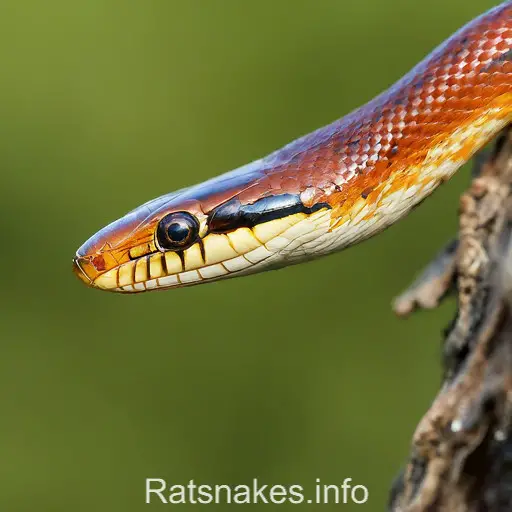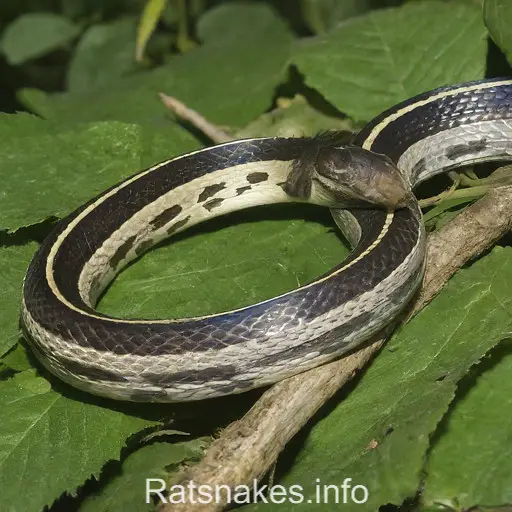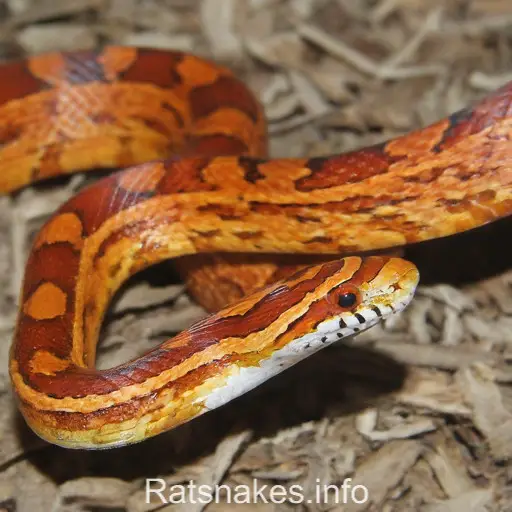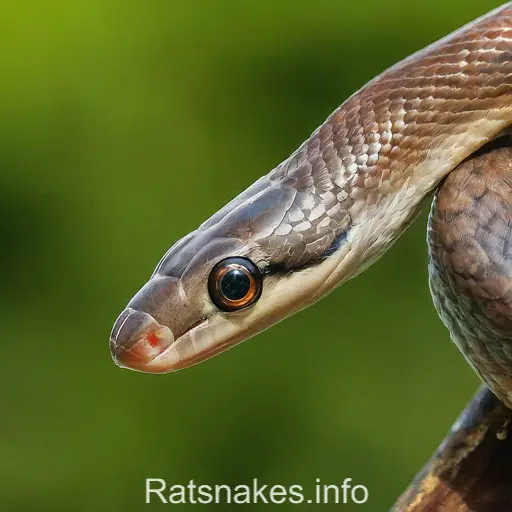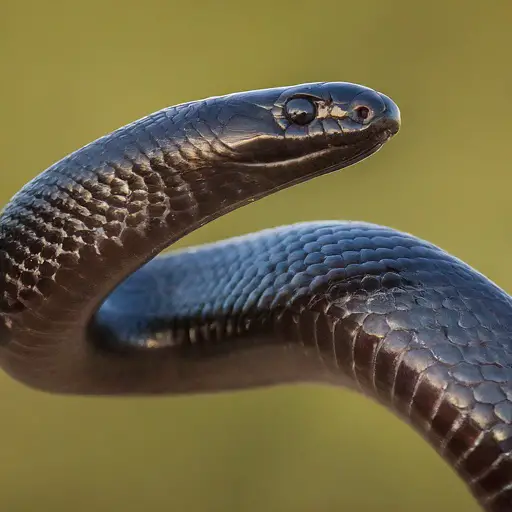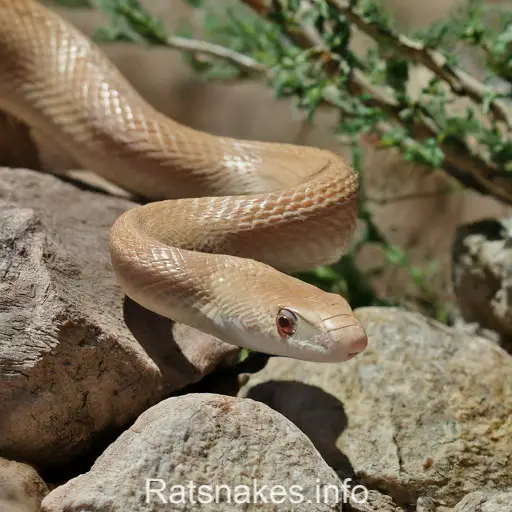
Are you curious about the Trans-Pecos Rat Snake? These fascinating creatures, scientifically known as Bogertophis subocularis, are native to the southwestern United States. With their striking appearance and unique behaviors, they have captured the interest of reptile enthusiasts and researchers alike. Let’s dive into the world of these beautiful snakes and uncover the secrets of their existence.
From their distinct coloration to their preferred habitats, there’s so much to learn about Trans-Pecos Rat Snakes. Join us as we explore their characteristics, habits, and the importance of conservation efforts to protect these incredible reptiles. Get ready to be amazed by the wonders of nature as we unravel the mysteries surrounding the captivating Trans-Pecos Rat Snake.
Overview of the Trans-Pecos Rat Snake
The Trans-Pecos Rat Snake, scientifically known as Bogertophis subocularis, is a magnificent species native to the southwestern United States. These snakes are renowned for their striking appearance and intriguing behaviors, making them a fascinating subject for reptile enthusiasts and researchers alike.
Trans-Pecos Rat Snakes are characterized by their distinctive coloration. They typically display a light beige to yellow background, adorned with bold dark blotches running along their bodies. This unique pattern not only adds to their aesthetic appeal but also serves as camouflage in their natural habitat.
Known for their arboreal tendencies, these snakes are skilled climbers, often seen scaling trees and shrubs in search of prey. Their diet primarily consists of small mammals, birds, and eggs, showcasing their role as essential predators in the ecosystem.
One noteworthy aspect of the Trans-Pecos Rat Snake is its preference for rocky habitats. They are commonly found in areas with rocky outcrops, canyons, and desert scrub. These environments provide the perfect blend of shelter and hunting grounds for these elusive reptiles.
Conservation efforts play a vital role in safeguarding the Trans-Pecos Rat Snake’s population. By raising awareness about their importance in maintaining ecological balance and preserving their natural habitats, we can ensure the continued existence of these captivating creatures for generations to come.
Physical Characteristics
- Coloration: They have a distinct pattern of light brown to gray with dark blotches along their bodies, which provides effective camouflage in their rocky desert environments.
- Size: Adult Trans-Pecos Rat Snakes typically grow to around 3 to 4 feet in length, with some individuals reaching up to 5 feet.
- Body: Their bodies are slender and elongated, allowing them to maneuver through tight rock crevices with ease.
- Eyes: They have large eyes with round pupils, a characteristic common among nocturnal hunters like the Trans-Pecos Rat Snake.
- Scales: Their scales are keeled, meaning they have a ridge down the center, aiding in grip and movement on the rough terrain they inhabit.
Habitat and Distribution
When it comes to the Trans-Pecos Rat Snake, understanding its habitat and distribution is crucial for appreciating its ecological niche. These serpents are predominantly found in the Chihuahuan Desert region, showcasing a preference for rocky landscapes and arid environments. Their natural habitat consists of rocky outcrops, canyons, and desert scrublands where they can camouflage effectively amidst the rocks and sandy soil.
In terms of distribution, these rat snakes are primarily located in the Trans-Pecos region of Texas and extend into northern Mexico. This area provides the ideal conditions for them to thrive, with adequate shelter, prey, and suitable temperatures. Despite their specific habitat requirements, these snakes have shown adaptability in certain instances, venturing into nearby grasslands and agricultural areas.
Exploring the habitat and distribution of the Trans-Pecos Rat Snake not only sheds light on its geographical range but also highlights the importance of conserving these unique reptiles in their natural environment. Understanding where they live and how they are distributed allows researchers and conservationists to implement effective strategies for their protection and preservation.
Behavior and Diet
When it comes to behavior, Trans-Pecos Rat Snakes are primarily nocturnal creatures, meaning they are most active during the night. During the day, they seek shelter in rock crevices or underground burrows to escape the scorching desert sun. These snakes are known for their calm demeanor and rarely display aggression unless provoked. When threatened, they may vibrate their tails to mimic a rattlesnake, a common defensive tactic in the wild.
In terms of diet, Trans-Pecos Rat Snakes are carnivorous and predominantly feed on small mammals like rodents, lizards, birds, and occasionally other snakes. Their ability to consume a variety of prey makes them vital components of the desert ecosystem, helping control populations of pests and maintaining ecological balance. These snakes are skilled hunters, using their excellent sense of smell and heat-sensing pits to locate prey in the darkness of the night.
One fascinating aspect of their diet is their occasional consumption of eggs, including those of ground-nesting birds and reptiles. By targeting nests, Trans-Pecos Rat Snakes can access a concentrated food source, providing them with essential nutrients while impacting the reproductive success of their prey species. This dietary behavior showcases their adaptability and resourcefulness in navigating the challenges of their arid environment.
Conservation Efforts
In recent years, there has been a growing concern about the conservation of the Trans-Pecos Rat Snake due to habitat loss and fragmentation. Here are some key points regarding conservation efforts for this fascinating species:
- Protected Areas: Conservationists have identified key habitats where the Trans-Pecos Rat Snake is found and have worked to establish protected areas to safeguard these critical locations.
- Education and Awareness: Efforts are being made to educate the public about the importance of this species in the ecosystem and the need to protect its natural habitat.
- Research and Monitoring: Scientists and researchers are conducting studies to better understand the behavior, population dynamics, and habitat requirements of the Trans-Pecos Rat Snake to inform conservation strategies.
- Mitigation of Threats: Strategies are being developed to mitigate threats such as habitat destruction, road mortality, and illegal collection that pose risks to the survival of these snakes.
- Collaborative Projects: Conservation organizations, wildlife agencies, and local communities are coming together to work on collaborative projects aimed at conserving the Trans-Pecos Rat Snake and its habitat.
By implementing these conservation efforts, we can help ensure the long-term survival of the Trans-Pecos Rat Snake and maintain the delicate balance of the desert ecosystem where they play a vital role. Let’s continue to work together to protect and preserve this unique species for future generations.
Key Takeaways
- Trans-Pecos Rat Snakes, scientifically known as Bogertophis subocularis, are native to the southwestern United States and are recognized for their striking appearance and arboreal tendencies.
- They have a unique coloration of light beige to yellow with dark blotches, are adept climbers, and prefer rocky habitats such as canyons and desert scrublands.
- Conservation efforts are crucial for protecting the Trans-Pecos Rat Snake’s population by raising awareness, preserving their natural habitats, and highlighting their role in maintaining ecological balance.
- Their physical characteristics include keeled scales, slender bodies, and large eyes with round pupils, making them proficient nocturnal hunters.
- Understanding their habitat and distribution in the Trans-Pecos region of Texas and northern Mexico is vital for effective conservation strategies and appreciation of their ecological niche.
- Trans-Pecos Rat Snakes consume small mammals, birds, and eggs, showcasing their importance in controlling pest populations and adapting to the challenges of their arid environment.
Conclusion
With ongoing conservation efforts and collaborative projects in place, we are optimistic about the future of the Trans-Pecos Rat Snake. By establishing protected areas, conducting research, and raising awareness, we are actively working towards preserving this unique species and maintaining the delicate balance of the desert ecosystem. Our combined efforts are essential for ensuring the long-term survival of the snake and safeguarding its habitat from threats like habitat loss and illegal collection. Together, we can make a significant impact in securing a brighter future for the Trans-Pecos Rat Snake and the diverse ecosystem it calls home.

